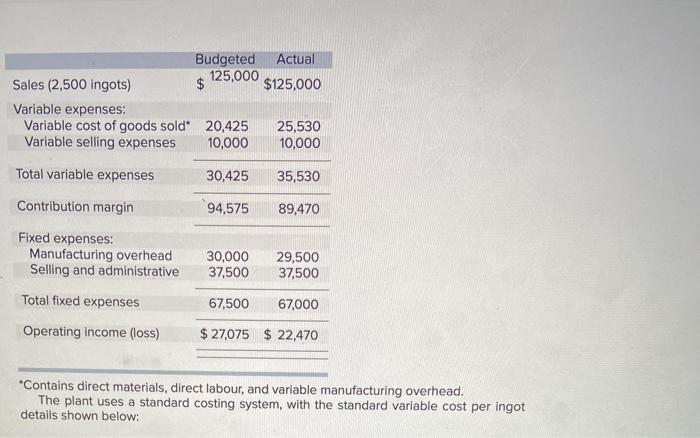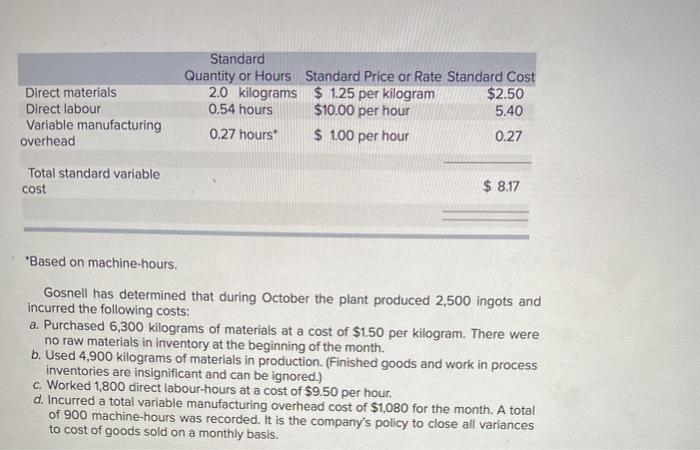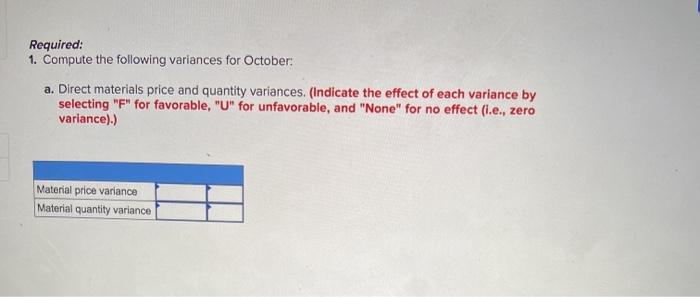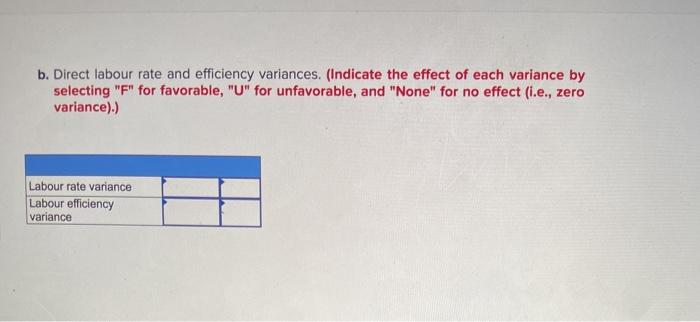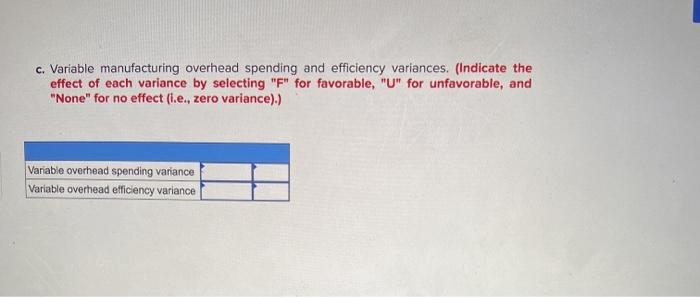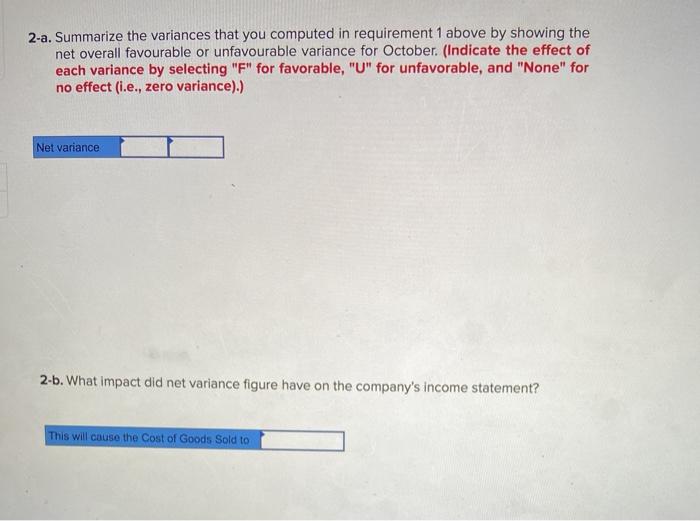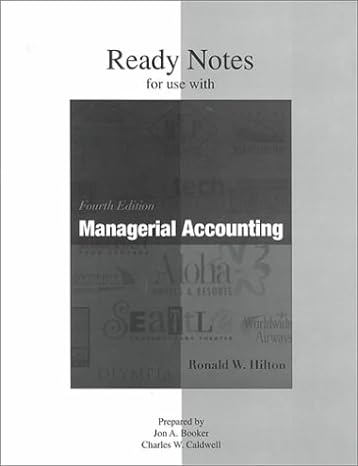please anwser asap and I will rate!!

London Company's Forest City Plant produces precast ingots for industrial use. Anne- Marie Gosnell, who was recently appointed general manager of the Forest City Plant, has just been handed the plant's income statement for October. The statement is shown below. Gosnell was shocked to see the poor results for the month, particularly since sales were exactly as budgeted. She stated, "I sure hope the plant has a standard costing system in operation. If it doesn't, I won't have the slightest idea of where to start looking for the problem." Budgeted Actual $ Sales (2,500 ingots) 125,000 $125,000 Variable expenses: Variable cost of goods sold* 20,425 25,530 Variable selling expenses 10,000 10,000 Total variable expenses 30,425 35,530 Contribution margin 94,575 89,470 Fixed expenses: Manufacturing overhead Selling and administrative Total fixed expenses 30,000 37,500 29,500 37,500 67,500 67,000 Operating income (loss) $ 27,075 $ 22,470 *Contains direct materials, direct labour, and variable manufacturing overhead. The plant uses a standard costing system, with the standard variable cost per ingot details shown below: Direct materials Direct labour Variable manufacturing overhead Standard Quantity or Hours Standard Price or Rate Standard Cost 2.0 kilograms $ 1.25 per kilogram $2.50 0.54 hours $10.00 per hour 5.40 0.27 hours $ 1.00 per hour 0.27 Total standard variable cost $ 8.17 Based on machine-hours. Gosnell has determined that during October the plant produced 2,500 ingots and incurred the following costs: a. Purchased 6,300 kilograms of materials at a cost of $1.50 per kilogram. There were no raw materials in inventory at the beginning of the month. b. Used 4,900 kilograms of materials in production. (Finished goods and work in process inventories are insignificant and can be ignored.) c. Worked 1,800 direct labour-hours at a cost of $9.50 per hour. d. Incurred a total variable manufacturing overhead cost of $1,080 for the month. A total of 900 machine-hours was recorded. It is the company's policy to close all variances to cost of goods sold on a monthly basis. Required: 1. Compute the following variances for October a. Direct materials price and quantity variances. (Indicate the effect of each variance by selecting "F" for favorable, "U" for unfavorable, and "None" for no effect (i.e., zero variance).) Material price variance Material quantity variance b. Direct labour rate and efficiency variances. (Indicate the effect of each variance by selecting "F" for favorable, "U" for unfavorable, and "None" for no effect (i.e., zero variance).) Labour rate variance Labour efficiency variance c. Variable manufacturing overhead spending and efficiency variances. (Indicate the effect of each variance by selecting "F" for favorable, "U" for unfavorable, and "None" for no effect (i.e., zero variance).) Variable overhead spending variance Variable overhead efficiency variance 2-a. Summarize the variances that you computed in requirement 1 above by showing the net overall favourable or unfavourable variance for October (Indicate the effect of each variance by selecting "F" for favorable, "U" for unfavorable, and "None" for no effect (i.e., zero variance).) Net variance 2-b. What impact did net variance figure have on the company's income statement? This will cause the cost of Goods Sold to 3-a. Pick out the two most significant variances that you computed in requirement (1) above. (Select all that apply) DODO Materials price variance Materials quantity variance Labour rate variance Variable overhead efficiency variance Variable overhead spending variance Labour efficiency variance


